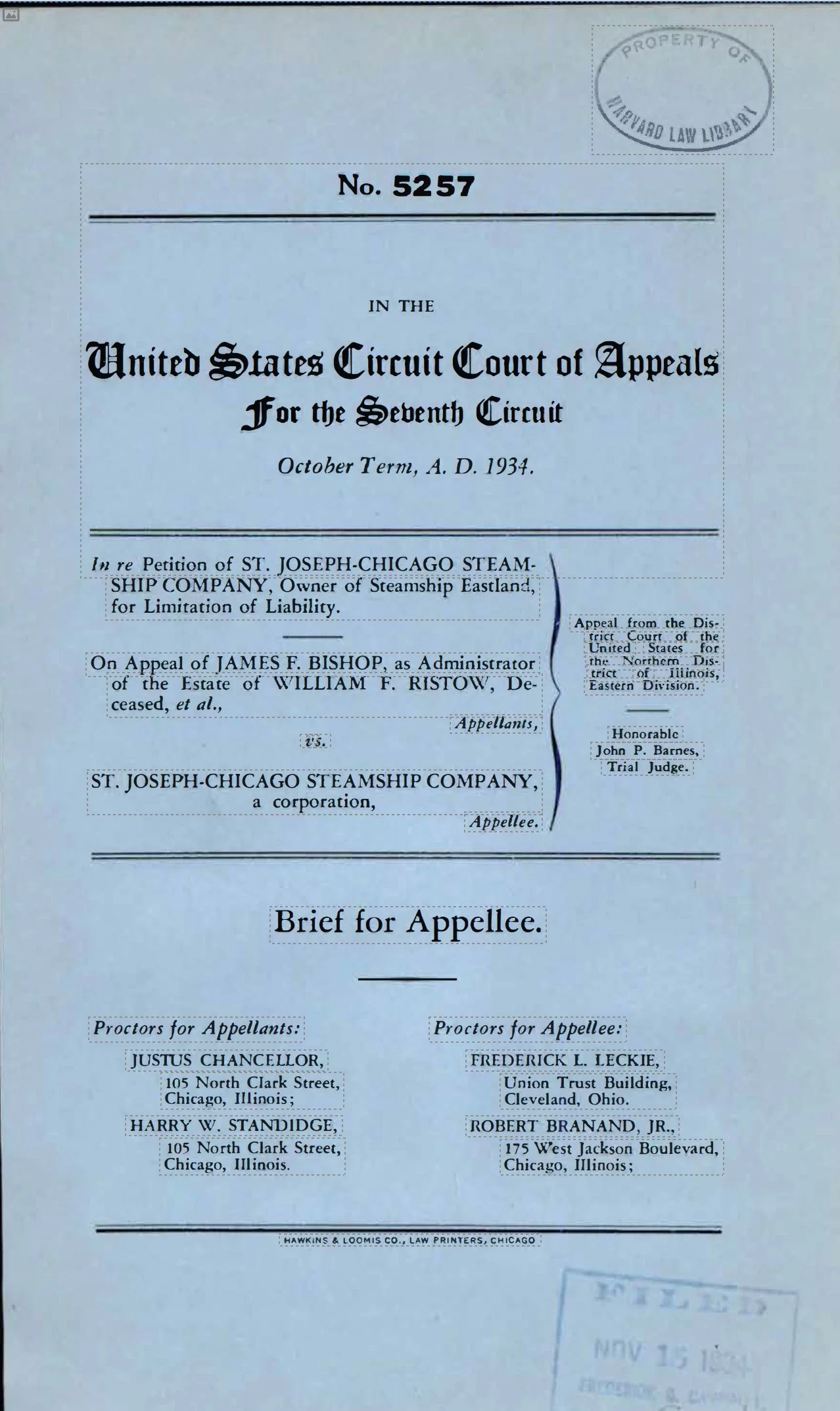From Cemetery to Courtroom: The Eastland Aftermath
Note: These are a portion of my show notes from Ep. 34 of Flower in the River Podcast, From Cemetery to Courtroom: The Eastland Aftermath.
Get ready for an intriguing tale of eBay espionage in Episode 34! I uncovered a juicy court document about the Eastland Disaster selling for big bucks on eBay. But plot twist - I found the same document free on Google Books! Don’t you love it when that happens?
This document revealed two new Eastland victims - William and Herman Ristow. These German immigrant brothers had their lives unexpectedly cut short that fateful day, and I attempted to unravel their stories and piece together their family history. An interesting coincidence also suggests I may be related to the Ristows!
If that’s not enough drama, I’ll dive into the legal battle William’s estate faced 19 years later, contesting the ship owner’s attempt to limit liability. Justice delayed ...
The Ristow brothers now rest in Chicago’s historic Forest Home Cemetery alongside labor movement martyrs executed after the infamous Haymarket Affair. This city never fails to astound with its rich history around every corner!
When Journalism Was Down the Block: The Local Lore of Community Publications
Time for source citing. You may wonder WHERE I gleaned this information about these Eastland Victims. It wasn’t in the Chicago dailies or any dailies. I found gold in Chicago’s turn-of-the-century treasures - The Day Book, an experimental daily sans advertising, and Forest Leaves, shining a light on suburban Cook County tales. Their pages reveal a vibrant local history.
A Little History of Community Publications
In the late 19th century, the printing press transformed America’s media landscape. As technology enabled smaller operations, a kaleidoscope of local voices joined the media chorus. Suddenly, tiny storefronts were churning out papers covering life in specific towns, highlighting issues important to niche groups, and giving voice to the voiceless.
Main Street was printing its own news - and it was juicy! Foreign language sheets shared words from the old country. Labor pages rallied for workplace reforms. Black publishers like Ida B. Wells exposed injustices buried by mainstream outlets. Local rags dished on scandals and petty dramas in small communities. The news was getting personal.
These specialty hits spoke right to their uniquely engaged readers. While many came and went like mayflies, their impact still resonates.
The Day Book and Forest Leaves publications opened windows into bygone neighborhoods and mindsets. And for me, they unlocked intimate details about the Eastland Disaster’s aftermath, bringing the world of my ancestors back to life.
Thanks to these niche publications, I could reconstruct more details about that gloomy July day in 1915-- beyond the standard death tallies and timelines. I glimpsed the disbelief and grief consuming Chicagoans, saw how some victims’ families fought steamship operators in court, and understood why this tragedy still haunts the city’s memory.
When it comes to community papers, I’ve had a front-row seat to see them pack a punch.
For over 20+ years writing for small town sheets and city rags alike, I’ve witnessed firsthand how niches whip the pants off the big guns.
Just look at my time at The Park Bugle, a spirited neighborhood gazette serving St. Paul. We didn’t just phone in obits - we recounted “Lives Lived,” spinning stories that honored our neighbors. And as photog, I captured shots spotlighting the humor and humanity of our community.
I passed on my secrets of hard-hitting hyperlocal reporting to students at Minneapolis’ famed Loft Literary Center. Many of my students launched writing careers from those classes - proof positive that small papers offer enormous opportunities.
In short, I’ve logged my hours in the bullpen of specialized pubs. And I’m a genuine believer. When a paper knows its people inside out, it can connect in ways big pubs only dream of. I’ve seen up close that niche news delivers - and delivers hard.
Final Thoughts
History is not a dusty book that closes with a thud. It’s a living, breathing thing - always ready for its next plot twist. When you think you’ve got it all figured out, new clues emerge to flip the script. Abandon all assumptions, ye who engage with history!
Those forgotten voices and buried truths clamor for attention once again. Rigid beliefs get shaken as history’s vivid cast breaks free from faded images. The past becomes not a done deal we file away but an unfolding epic with room for rediscovery.
So be ready for fresh surprises and insights. Let history breathe, move, surprise you. The people who walked those days were every bit as complex as us. Their struggles and triumphs deserve not just to be recorded—but revisited.
Who knows what paradigm-shifting perspectives wait in the wings? We must make space for them. Because the truth is, history is never one and done. It just keeps unspooling its colorful yarns, so long as we are willing to follow along.
Podcast Link: From Cemetery to Courtroom: The Eastland Aftermath
Members of the Ristow Family
I

